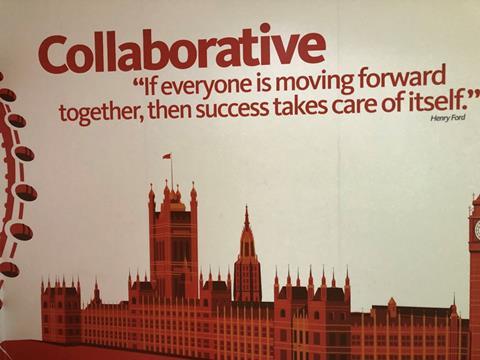
Sanjay Patel, Founding Partner of the Packaging Collective, gives his perspectives on the principles of good packaging design in the light of the recent Pro2Pac 2019.
Pro2Pac and IFE recently saw some 20,000 visitors go through the door and of course, packaging was a conversation on many lips. There were several debates, discussions and different points of view, statistics, articles and tensions underpinning an overall confusion not only across the industry, but across our potential customers and consumers. That’s a good thing though; tension and provocation create momentum and energy to change for the better.
As a high-level thought piece from me, irrespective of material, I think we need to stick with the four basic principles of good packaging design. In other words, for metals, glass, natural fibre, composites, fossil-based plastics, bio-based plastics, compostable, degradable and any other classification of materials we should: Reduce, Re-use, Recover and Recycle. The biggest confusion as I understand it are the figures associated with recovery and recycling rates.
Here is what I mean by those elements (apologies to those of you that already know this):
Reduce: If it doesn’t need packaging, don’t use any. If it does need packaging, use the least amount possible that makes the product fit for purpose in the most sustainable way. Better by design and by getting the brief right at the front end you minimise the impact at the back end. The north star must be human and environmental safety… it would be completely unacceptable for a pharmaceutical product, for example, to be ineffective at point and time of need just because there is a material and financial saving to be made. Equally, this is followed very closely by increasing food waste through reduction of packaging effectiveness in shelf life… remember that there are already 2 billion people in the world without enough to eat and in the UK we wasted 6.7 million tonnes of food in 2017. That is simply unacceptable. Appropriate levels of packaging must work hand in hand with consumer education on how to consume the food we grow in a more effective manner.
Re-use: Lets take a compostable coffee cup made of natural fibres and materials as an example. It still takes energy and resources to move that bio-mass, convert it into the cup and distribute it to the point of consumption. From the principles of a basic life cycle analysis: it must be better to re-use that compostable cup twice, three times or even five, and make the most use of that up-front energy investment before the material has ended its effective life in that current state.
Recover: I started working with the Ellen MacArthur foundation over a decade ago and was introduced to the concept of both technical and biological materials working in a restorative way: the building blocks for a circular economy. For traditional technical materials, such as glass, metal and fossil-based plastics, it is obvious that we must not lose these valuable resources and retain their highest usable state for as long as possible before downgrading them. For example, food (or medical) grade aluminium should remain as food grade aluminium for as long as possible before being re-classified to non-food grade and used for an alternative use. What about newer compostable/biodegradable materials then? Sure, they might break down in the environment over a period of time, but litter is one of the most visible signs of human malpractice in the environment. Would it not be better to recover those compostable and biodegradable materials, break them down in the most sustainable way possible and return those biological nutrients to a farmer’s field to grow more food rather than them just ending up in a hedge next to the road?
Recycle: Everything is recyclable; a better question is at what cost economically and environmentally? Equally in the ‘developed’ countries we have a global societal responsibility to invest in the correct infra-structure to deal with our own waste and support those less fortunate than ourselves. I find it hugely ironic that we call ourselves ‘developed’ in the north Western Hemisphere and yet don’t understand the value of some basic materials as a society at large. However, in ‘developing’ countries people are creating the most basic of livings (food, water, shelter, shoes for their kids) by collecting glass, metal and plastics to recycle and reuse.
These four elements have been well understood by the tens of millions of packaging professionals that currently support the industry globally. Through the success of packaging it has become ubiquitous and everyone is an expert since we all engage with packaging items multiple times a day before we even leave our homes. I have a degree and two masters in the subject of packaging and have worked in the industry for 26 years. I think I know something about packaging and I’ll happily admit that I don’t know everything - how could I, who does? How do we best support a rising population of more than 7 billion people and minimise the impact on the environment, even just through the lens of packaging?
The one thing that is true is that we are better together collaboratively addressing this challenge. Between the direct and indirect packaging professionals, designers, the rising talent of students, industry bodies, trade associations, local governments, retailers, brand owners and NGOs to keep us honest, there is a lot of knowledge to share and thrive upon.
That was the reason David Harding-Brown and I set up the Packaging Collective… to share knowledge, unite and capitalise for the greater good on the expertise that exists across the design and packaging industries. Come join us at the Packaging Collective and if you are already a member, help us spread the message to make a difference.

















